La Palma, known as La Isla Bonita, is a place where the weather changes with every step. From sunny beaches and humid forests to snow-covered mountains, the island feels like a miniature continent.
Here, the weather is more than just a forecast, it’s part of the experience. Discover how temperatures vary, when is the best time to visit, and what you need to know before packing your suitcase.
La Palma’s Climate at a Glance
- Subtropical climate, mild all year round
- Average temperatures: 17 °C in winter and 24 °C in summer
- Sea temperature: 19 °C in winter and 24 °C in summer
- More rainfall from November to March
- Dry summers, perfect for beach lovers
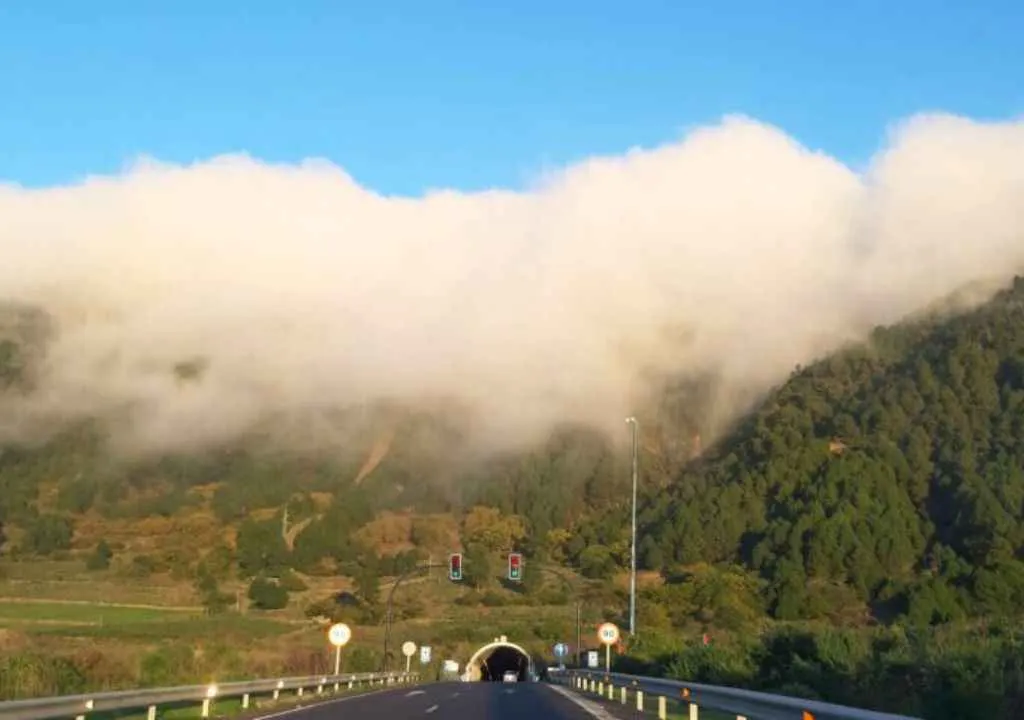
The Weather in La Palma
Entdecken Sie das Wetter auf La Palma. Direct link to APALMET
The Microclimates of La Palma
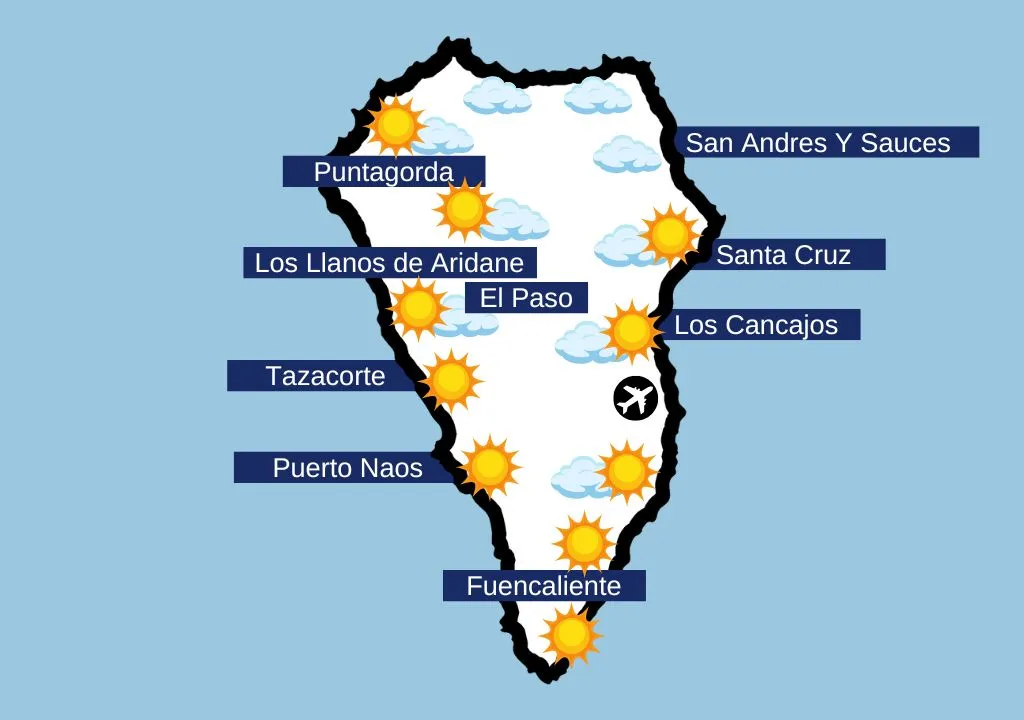
South and West: sunny and warm all year
The sunniest side of the island, ideal for beachgoers. From Fuencaliente to Tazacorte, you’ll find dry, warm conditions with the highest temperatures on La Palma.
Highlights: Puerto Naos, Tazacorte, Fuencaliente
| Month | Min (°C) | Max (°C) | Sea (°C) | Sun Hours | Rainy Days |
|---|---|---|---|---|---|
| Jan | 16 | 22 | 20 | 195 | 5 |
| Feb | 16 | 22 | 20 | 200 | 5 |
| Mar | 16.5 | 22.5 | 20 | 215 | 5 |
| Apr | 17 | 23 | 20 | 220 | 3 |
| May | 18 | 24 | 21 | 240 | 1 |
| Jun | 19.5 | 25.5 | 22 | 250 | 0 |
| Jul | 21 | 27 | 23 | 290 | 0 |
| Aug | 22 | 28 | 24 | 270 | 1 |
| Sep | 21.5 | 27.5 | 25 | 205 | 1 |
| Oct | 20 | 26 | 24 | 205 | 3 |
| Nov | 18.5 | 24.5 | 22 | 200 | 5 |
| Dec | 17 | 23 | 21 | 200 | 6 |
East and Northeast: mild and humid
Places like Santa Cruz de La Palma, Mazo or Los Cancajos enjoy cooler, balanced weather. Perfect for seaside strolls and peaceful afternoons.
Highlights: Santa Cruz, Mazo, Los Cancajos
| Month | Min (°C) | Max (°C) | Sea (°C) | Sun Hours | Rainy Days |
|---|---|---|---|---|---|
| Jan | 14 | 20 | 19 | 140 | 7 |
| Feb | 14 | 20 | 18 | 147 | 6 |
| Mar | 14 | 21 | 18 | 170 | 5 |
| Apr | 15 | 22 | 19 | 174 | 3 |
| May | 16 | 23 | 20 | 187 | 2 |
| Jun | 18 | 25 | 21 | 174 | 1 |
| Jul | 19 | 26 | 22 | 218 | 0 |
| Aug | 20 | 27 | 23 | 215 | 0 |
| Sep | 20 | 27 | 24 | 197 | 1 |
| Oct | 19 | 26 | 23 | 172 | 3 |
| Nov | 17 | 24 | 22 | 146 | 5 |
| Dec | 15 | 21 | 20 | 148 | 7 |
North: green, cool and humid
The north of La Palma, including Barlovento, Garafía and Puntagorda, is a true garden of lush vegetation, kept alive by regular rain and fresh air. This region is ideal for those who love hiking in the shade of green forests, discovering hidden trails and feeling immersed in the island’s wild nature. Expect laurel forests, dramatic cliffs, and magical paths through untouched landscapes.
Highlights: Garafía, Barlovento, Puntagorda
| Month | Min (°C) | Max (°C) | Sea (°C) | Sun Hours | Rainy Days |
|---|---|---|---|---|---|
| Jan | 12 | 17 | 19 | 120 | 8 |
| Feb | 12 | 17 | 18 | 125 | 7 |
| Mar | 13 | 18 | 18 | 140 | 6 |
| Apr | 14 | 19 | 19 | 150 | 4 |
| May | 15 | 20 | 20 | 160 | 3 |
| Jun | 16 | 21 | 21 | 170 | 2 |
| Jul | 17 | 22 | 22 | 180 | 1 |
| Aug | 18 | 23 | 23 | 180 | 1 |
| Sep | 18 | 23 | 24 | 160 | 2 |
| Oct | 17 | 22 | 23 | 140 | 4 |
| Nov | 15 | 20 | 22 | 130 | 6 |
| Dec | 13 | 18 | 20 | 120 | 7 |
High Mountains: cold and snowy in winter
Up in the peaks of La Palma, especially around Roque de los Muchachos, the island’s highest point, the weather changes drastically. It’s colder, windier and full of contrast. In winter, snow is not uncommon, and temperatures can drop to –5 °C at night.
This area is perfect for adventurous spirits and stargazers alike, but you’ll need to dress warmly and be prepared for sudden weather shifts.
Typical Weather Phenomena on La Palma
- Trade Winds (Alisios): Fresh summer breezes from the northeast that keep the island pleasantly cool.
- Horizontal rain: Fine mist created by clouds brushing against the mountains, especially in the northeast. This helps feed the laurel forests.
- Calima: A warm, dusty wind from the Sahara that turns the sky yellow and raises temperatures.
- The “time tunnel”: Cross the Túnel de la Cumbre and go from sunshine to rain, or vice versa, in just a few seconds.
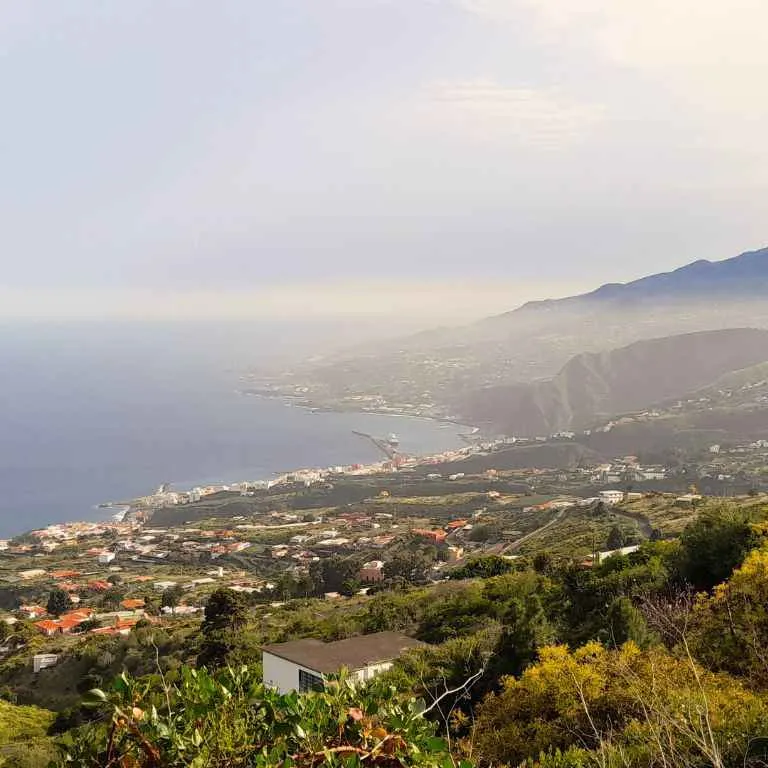
Sea Water Temperatures Around La Palma
The Atlantic surrounding La Palma is surprisingly mild:
- Winter: around 19 °C
- Summer: around 24 °C
That makes it perfect for swimming, snorkeling, kayaking and other water activities all year round.
Best Time to Visit La Palma
- Hiking: April to October, longer days and minimal rain.
- Beach and sun: Summer, especially the southwest coast.
- Stargazing: Year-round, but skies are often clearest in winter.
- Relaxing getaways: Spring and autumn, mild weather, fewer visitors.
Each season reveals a different face of La Palma.
In summer, the sun rules. In winter, the island dresses in green and mist.
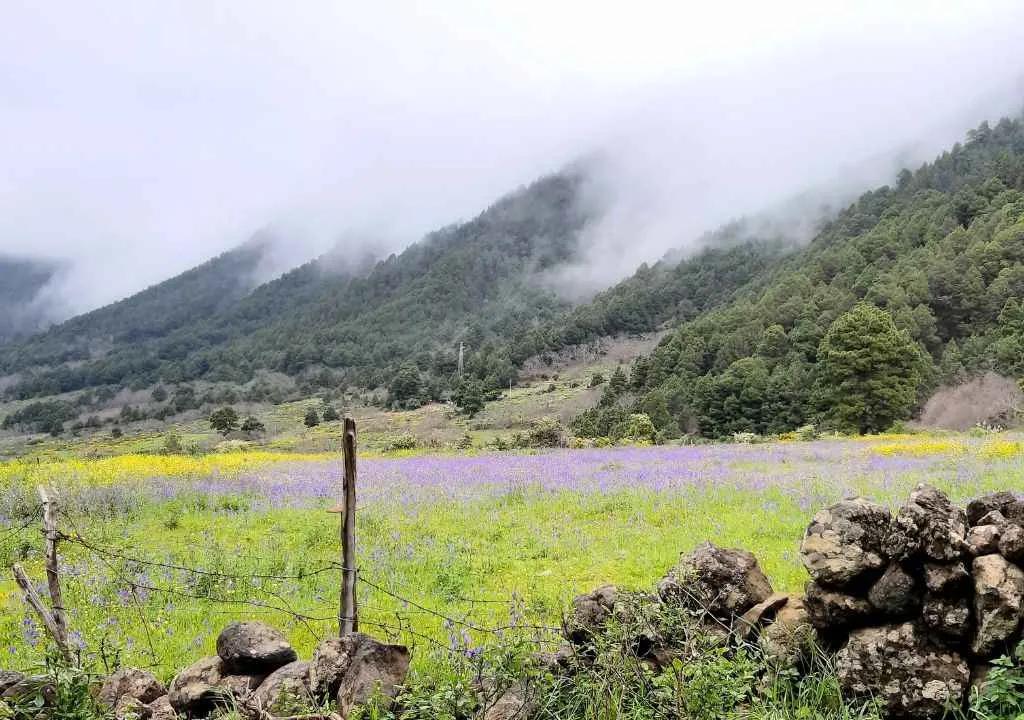
Practical Tips Before You Travel
- Always pack a light jacket or windbreaker, even in summer it can be chilly in the mountains.
- For every 100 metres in altitude, the temperature drops roughly 1 °C.
For example: If it’s 20 °C in Puerto Naos (sea level), it might be just 14 °C in El Paso (over 600 m above sea level). - Bring sturdy, comfortable shoes for walking, and dress in layers.
- Check weather forecasts before going out, especially if you’re hiking.
Use reliable sources like AEMET or APALMET.
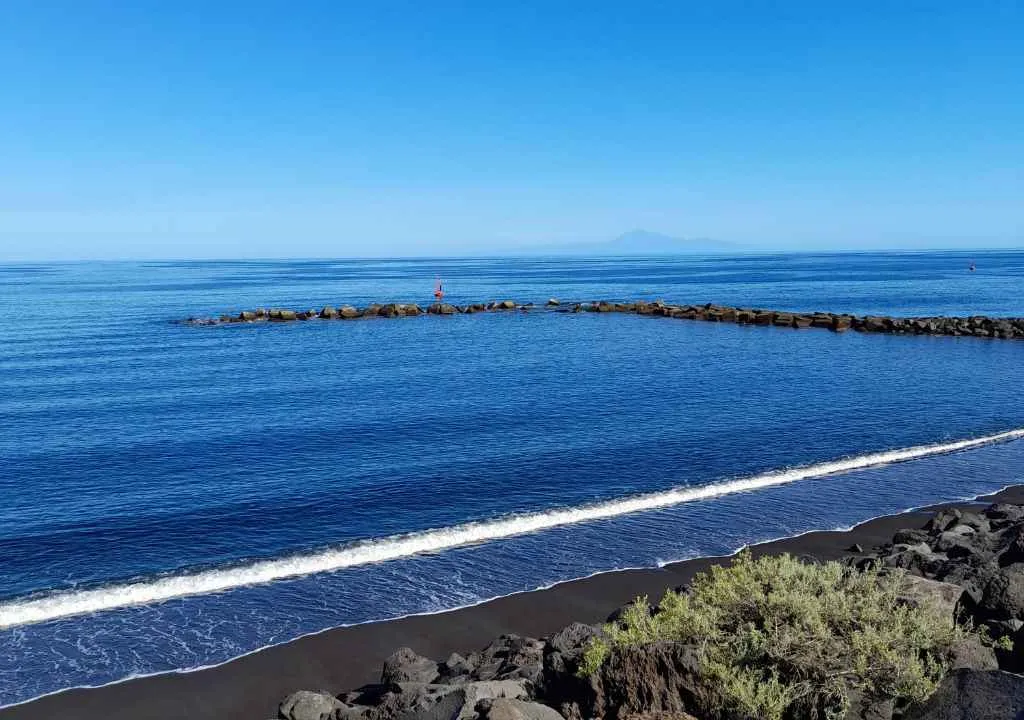
Best beaches of La Palma
Discover the coastal treasures of La Palma: Beaches with black volcanic sand and crystal-clear water await you in this island paradise.
